|
General-Motors Holden
|
1931 - present |
Country: |
 |
|
James Alexander Holden
When British migrant James Alexander Holden arrived in Adelaide in 1852, he set about establishing a business as a leather worker and saddle-maker. In 1872 he set up a partnership with Birks, only to have it disolved 3 years later. Following that ill-fated partnership, Holden decided to bring his son into the business in 1879, and then allowed Henry Frost to join as Junior Partner in 1885; Adolf Frost was well respected carriage builder, and the company was soon to become "Holden and Frost".
In 1910 Holden & Frost began trimming motor vehicles and in 1914 they built their first one off car body for an imported Lancia chassis. Larger contracts followed but ironically the first major contract was for Dodge bodies (a later competitor).
The Import Embaro On Complete Vehicles
By 1917 the Australian government had placed an import embargo on complete vehicles, the First World War having almost entirely involved Britain's industry, and German U Boat Captains were doing their best to ensure that very few cargo ships leaving North America reached their intended destination.
These conditions, combined with the need to save valuable cargo space, restricted imports to chassis and forced local vehicle agents to look to local firms to provide the bodies. In 1919 Edward Wheeldon Holden registered "Holden's Motor Body Builders" as a separate company specialising in car bodies.
At the time they built bodies for Overland, Chevrolet, Durant, Hupmobile and Dodge, and by 1923 they were producing over 12,000 bodies per year. In 1924 "Holden's Motor Body Builders" became the sole Australian body builder for
General Motors vehicles and had an output of over 22,000 bodies (over 11,000 for GM) in 65 different body styles.
George Rayner Hoff Designs The Famous Lion And Stone
The famous "Lion and Stone" symbol was designed in 1928 by George Rayner Hoff, and represented the legend of man's invention of the wheel. It was subsequently fitted to all Holden bodies and, although undergoing minor changes over the years, remains to this day. During the 'Great Depression' in 1930, production fell from 34,000 units per year to a mere 1651 and, in 1931,
General Motors were able to buy the entire Holden's Motor Body Builders and merge it with their North American operation to form General Motors - Holdens.
This move was not entirely motivated by taking advantage of the company when it was at an all time low but was mainly occasioned by the Australian government freezing the currency so that money couldn't leave the country during the depression. The money to pay GM in the United States for the previously imported chassis was trapped in Australia and so was used to finance the buy out which in part took the form of swapping the ordinary shares held by 1550 Australian shareholders in Holdens Motor Body Builders for 561,000 6% 1 pound preference shares (ie 6% of the value of their shares each year) in the new company. This made the paid up capital of the new company 561,000 pounds Australian capital (37% of the total) and 965,800 pound U.S. capital (63% of the total).
They Just Won't Do As They're Told
In addition there was tension between the Australian operation and the United States with management in the United States complaining "Amazing people these Australians; they just won't do as they're told" (Inness Randolph head of General Motors Australia to Larry Hartnett in 1929) and a merger/takeover was also a way to solve this little problem. In 1934 Larry Hartnett (later Sir Laurence Hartnett) was sent to Australia by GM as Managing Director of the Australian company with a directive to either make it profitable or close it down.
Fortunately Hartnett respected the resourceful nature of the Australian operation and stated "The economies achieved by Holden's at Woodville put them, in many ways, years ahead of the rest of the world in manufacturing techniques. The resourcefulness and initiative of the Australians in this industry is beyond praise." By 1935 the world economy had strengthened and under the leadership of Larry Hartnett GM-H lifted production to 23,129 bodies and a profit of 650,000 pounds. The company also introduced the "Sloper" to the world which was the fore runner of the hatchback and led the rest of the world in producing the first all steel bodies.
Sir Laurence Hartnett Makes Plans For An All Australian Car
In 1936 Larry Hartnett began planning the complete production of a "wholly Australian car", however another World War intervened, with the (Menzies) government of the time putting these plans on hold. After the war the Government asked for proposals fromany local company for production of a complete car - and General Motors Holdens were the only company to reply. On September 20, 1944 Sir Laurence Hartnett and Mr Jack Horn of General Motors - Holdens made a presentation entitled "Australia - GM's Performance and Results - Manufacture of Complete Motor-Cars in Australia" to the Executive Post War Planning Committee of General Motors in New York. This meeting gained approval in principal for GM-H to commence the process of designing and building an Australian car.
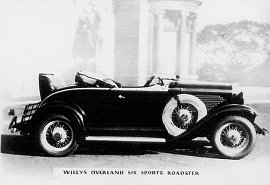
The 1932 Willys Overland Six featured a Holden body...
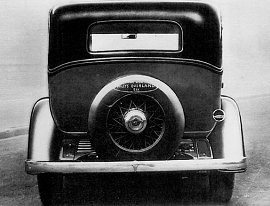
As did the Willys Overland Six Sedan...
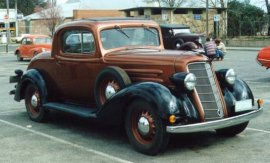
This 1934 Oldsmobile sported a lovely two-tone Holden body.
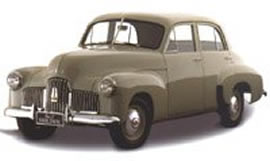
We can thank Larry Hartnett for the 48/215.
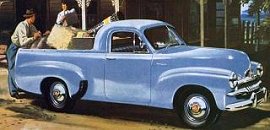
Holden FJ Utility.
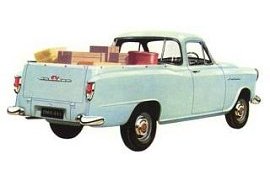
Holden FE Utility.
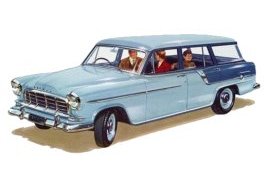 Holden FC Station Sedan.
Holden FC Station Sedan.
 Holden FB Special Sedan.
Holden FB Special Sedan.
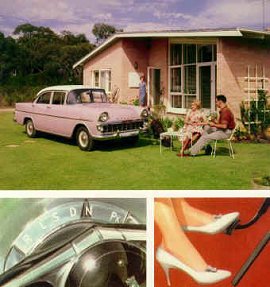 EK Holden with 3 speed Hydra-Matic.
EK Holden with 3 speed Hydra-Matic.
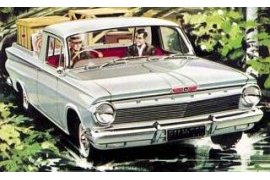 Holden EJ Utility.
Holden EJ Utility.
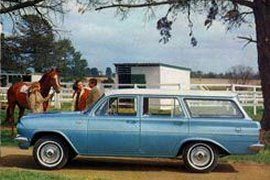 Holden EH Station Sedan.
Holden EH Station Sedan.
 Holden HD Station Sedan.
Holden HD Station Sedan.
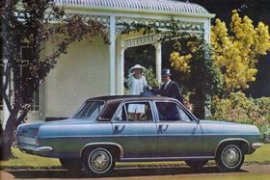 Holden HR Premier.
Holden HR Premier.
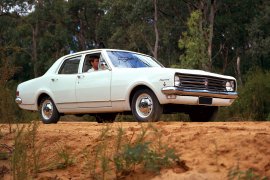 Holden HK Kingswood.
Holden HK Kingswood.
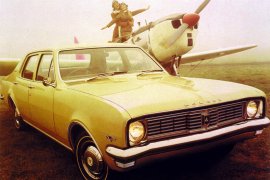 Holden HT Kingswood with 253 V8.
Holden HT Kingswood with 253 V8.
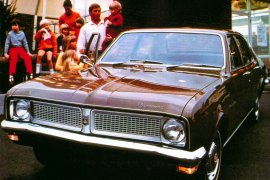 Holden HG Kingswood.
Holden HG Kingswood.
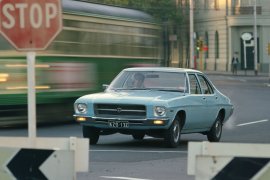 Holden HQ Kingswood.
Holden HQ Kingswood.
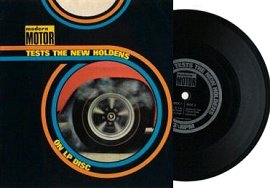
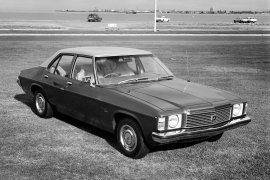 Holden HJ Kingswood.
Holden HJ Kingswood.
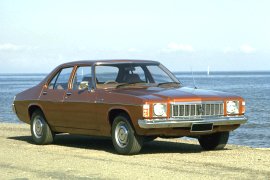 Holden HX Kingswood.
Holden HX Kingswood.
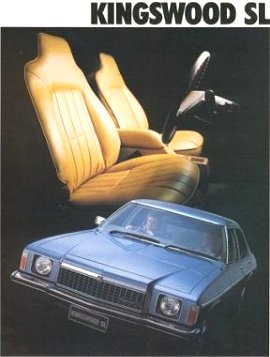 Holden HZ Kingswood SL.
Holden HZ Kingswood SL.
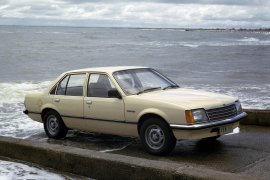 Holden VB Commodore.
Holden VB Commodore.
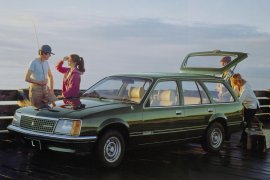 Holden VC Commodore Wagon.
Holden VC Commodore Wagon.
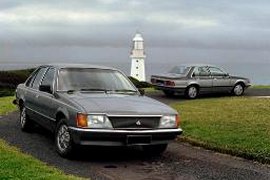 Holden VH Commodore.
Holden VH Commodore.
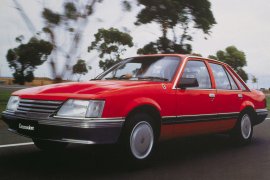 Holden VK Commodore.
Holden VK Commodore.
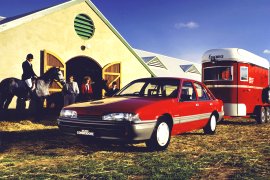 Holden VL Commodore.
Holden VL Commodore.
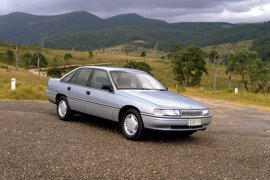 Holden VN Commodore.
Holden VN Commodore.
 Holden VP Commodore.
Holden VP Commodore.
 Holden VR Commodore.
Holden VR Commodore.
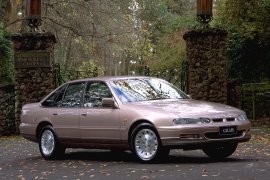 Holden VS Commodore.
Holden VS Commodore.
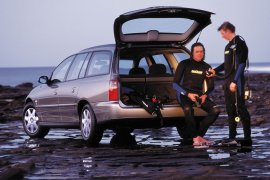 Holden VT Commodore Wagon.
Holden VT Commodore Wagon.
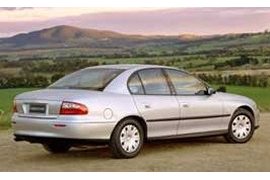 Holden VX Commodore.
Holden VX Commodore.
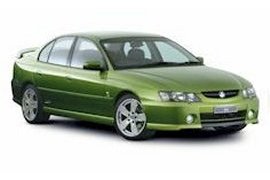 Holden VY Commodore.
Holden VY Commodore.
|
Selling It To Detroit
A major production which was rehearsed for 3 weeks in New York and involved 18 stenographers, 7 photographers and photographic reproduction men, 2 statisticians plus experts from GM finance, materials and manufacturing divisions all with the aim of convincing the committee of approving the project in principal, it was finally approved in November 1944.
But it almost did not eventuate, with the US deciding that it would not invest in Australia (despite making hefty profits from its Australian operation) and only when the Commonwealth Bank came up with £2,500,000 pounds and the Bank of Adelaide came up with the balance of £500,000 pounds did the project finally get off the ground.
The 48/215 Holden
The 1948 Holden took about 20 seconds to accelerate from rest to 100 kph and had a top speed of 130 kph. People thought it was fast. It had no carpet, no radio and no armrests and people thought it was well equipped. Needless to say, things have changed. But that first modest, unassuming Holden, officially called the
48-215 and later dubbed the '
FX' or 'humpy', remains the most important car in local history. It was the first successfully mass-produced Aussie car and the one which launched the Australian industry.
The
48-215 offered more for the money than any of its competitors. And it was a car which genuinely measured up to Australian conditions at a time when every driver frequently m faced potholed dirt roads (not even the roads connecting the capital cities were fully sealed!). The Holden stood the test where the similarly priced British 'fours' left their suspension components by the roadside. The features which made Holden an institution - and Australia's best selling car - were virtually unchallenged. The maker's boast of '80 miles per hour and 30 miles per gallon' was lived up to and the light monocoque 4.4 metre body could seat six in comfort.
Power came from a 2.15-litre, 6-cylinder 45 kW engine, coupled to a three-speed column-shift manual gearbox. This torquey power-plant would propel the car from walking race to full speed in top gear with no drama, a feature which set it apart from the high-revving English cars which came here after the war. Owners hardly ever needed to _se first or second gears for anything but standing starts. Even today, a well-kept
48-215 is still no slouch and will exceed every state speed limit without a worry in the world.
In spite of its attributes, it's worth remembering that the
48-215 was no dream machine. In many ways, the bare bodied newcomer was the epitome of austerity. It had one key-operated door lock (on the passenger's door), no chrome mouldings, one tail-light and no turn-indicators. Inside, the story was much the same. To keep it light and affordable, the
48-215 had no heater and originally only one sun-visor: on the driver's side.
Ventilation was effected with flipper windows and an adjustable scoop between the bonnet and windscreen. Demisting was effected by a sleeve or handkerchief. Options included an 'Air Chief 5' radio, a rear Venetian blind, a left-hand side sun-visor, a locking petrol cap and a heavy duty oil bath air-cleaner. Who could ask for anything more? The Holden sold remarkably well and the range was expanded. In January
1951 a utility was added to the range; in July
1953 a 'Business Sedan' (taxi version) appeared.
The FJ Holden
In October
1953 Holden number two, the famous FJ model, first saw the light of day. The FJ has been immortalised in film and song, and is undoubtedly the most fondly remembered of the early Holden’s. 170,000 examples were produced between
1953 and
1956 (making the
FJ easily the biggest selling car of its day) and in later years second-hand versions became the 'first car' for many Australian motorists. The FJ's jukebox-style grille and small chrome fins epitomised the rock and rolling 1950s better than the austere original model and the FJ is now one of the revered symbols of Australiana.
In spite of the hype, the
FJ was little more than a
48-215 ('FX') with more chrome and doodads. The original engine and gearbox were carried over and upgrades were limited to cosmetic changes and a few minor mechanical improvements. The main exterior changes were a fancier grille, different hubcaps and bumpers plus several chrome body mouldings. Three
FJ sedan types were produced: Standard, Business and a new, tarted-up 'Special' model.
Utility and Panelvan body styles were also available. We would have got a wagon as well except the bean counters said there wasn't much point spending money tooling up for an extra model when they couldn't build enough of the models they already had. One thing the
FJ did offer over the
48-215 was a much greater list of options. The 'Special' version even featured such upmarket features as armrests and a cigarette lighter and it could be had in a two-tone finish. By the mid-1950s the
FJ was looking pretty dated but it still sold well because of its value-for-money reputation for durability, and impressive performance.
The FE and FC Holden
In July
1956 a replacement arrived in the form of the
Holden FE. Claimed as the first Holden totally developed in Australia, it introduced a completely new body. This was a more conventional 'three-box' body with a flatter bonnet and boot. The
FE also boasted a longer wheelbase and wider track and was lower. It ran on smaller 13 inch wheels which gave it improved handling.
Other upgrades included a 12-volt electrical system and two other Holden firsts: a one-piece windscreen and lockable glovebox, The original Holden drivetrain was carried over but engine power was slightly increased by lifting the engine compression ratio and using larger
valves. It was just as well, as the new model was heavier. As with the
FJ, the
FE was initially available in three versions: Standard, Special and Business sedans. In March 1957 the first Holden station wagon was released.
When the mildly face-lifted
FC replaced the
FE in May 1958, half of all the cars sold in Australia were Holden’s. Holden salesmen boasted they had the easiest job in the world. Aside from grille changes and new ornamental chrome fins at the rear, the FC was much as before. Wisely, GM-H hadn't changed a winning formula. By the time GM-H replaced the
Holden FC with the
FB model (January
1960), the 500,000th Holden had been produced and the 10,000th exported.
The FB and EK Holden
To many the
FB Holden was a case of Holden losing the plot. It gave buyers the first 'real' fins (the previous ones being add-on chrome jobs) plus a few other American touches including a flash new dashboard and a wrap-around windscreen with authentic dog-leg windscreen pillars. The wheelbase remained the same but larger overhangs stretched the length by 140 mm. To power this heavier package the engine was bored to 2.26 litres and the compression ratio raised. Although to many observers it was an awkward package, the FB comfortably continued as Australia best-selling car. By the time the face-lifted EK Holden hit the streets, Ford had released its lithe
Falcon XK. The Falcon was a generation ahead in styling but couldn't match the Holden's ruggedness and serviceability.
The
Falcon was available with a 2-speed automatic, transmission but with the
EK model (
1961) GM-H went one better and offered a 3-speed auto. This was the US-built Hydra-Matic which was very smooth and allowed the auto Holden to maintain respectable performance. The EK stayed in production just over a year before the more modern
EJ model gave Holden a worthy competitor for the Falcon in the styling stakes. However, neither could match the new R Series Valiant for performance.
The EJ and EH Holden
The
EJ had a completely new body with a lower profile. Practical features such as good around clearance and a generous cargo area (particularly in the wagon) were maintained and mechanical improvements included new Duo Servo
brakes and a tougher front-end. The
EJ brought with it a new upmarket derivative called Premier. complete with leather-covered bucket seats, a heater, metallic paint, lavish carpets and Whitehall tyres. This model represented the last run for the venerable Grey motor. which had first seen service in the original Holden. The
EJ production run included the millionth Holden. The company had turned from a fledgling into a world class operation and - ironically - was producing more cars per year than the entire Japanese industry. And even better things were to come...
The
EH Holden is arguably the second most fondly remembered old Holden. It lacks the out-and-out nostalgia of an
FJ but, to many people, it is the best car ever to wear a Holden badge. The
EH was the eighth model Holden. Announced in August
1963 the car took the local motoring scene by storm. It was the most powerful and best equipped Holden to date and, to most people, also the best looking. No wonder Aussies bought more than a quarter of a million of them in 18 months. Although it was based on the
EJ, there was some clever styling work and a new-look roofline to greatly modernise the shape.
But the big news was under the bonnet, where a completely new six-cylinder engine supplied the power. This engine (covered in more detail in another chapter) was available in two versions - the '149' and '179', which were named after their cubic inch sizes. Because the block was painted red, the donk was immediately dubbed the 'Red motor'. In 179 form it had 50 per cent more power than the 'Grey' engine. The EH range included a wagon version of the Premier and the first hot Holden to come straight out of the factory. This was the
EH 'S4' which was a limited-run special, designed to win Bathurst. Although it didn't succeed (being downed by a Cortina!) it signalled a corporate interest in motor sport which would grow through the years. The S4 had upgraded brakes, a bigger fuel tank, different wheels and semi-blueprinted engine parts.
The HD and HR Holden
1965 brought the
Holden HD range with a restyled body and the most powerful Holden engine yet released. Not everybody liked the new styling and today some people suggest that
HD stood for 'Horribly Designed' or 'Holden's Disaster'. Others point out there is a Holden club for every individual Holden series - except the
HD. Nevertheless, it's worth noting that when it was announced many of the motor mags called the HD the 'best looking Holden yet' and the sales in the first few months were the highest ever experienced by Holden before or since.
The
HD was wider than the
EH model and slightly longer although the increased length was largely made up of the pointed guards. Nevertheless, it had better space packaging so offered more usable room. Equipment levels were improved and other features such as self-adjusting
brakes were added (with front discs as an option). On the engine front, the high-performance X2 engine was the big news. Available as an option for all models, this had twin Bendix carburettors, a modified camshaft and changed manifolds. It developed 105 kW, about 25 per cent up on standard.
By early
1966,
HD sales had slowed dramatically (as much due to a credit squeeze as the public's loss of interest) and GM-H had rushed the HR model on to the market. To those for whom the
HD was 'Horribly Designed' the
HR was 'Hastily Rectified'. As well as cleaning up the
bodywork to eliminate the more avant garde aspects of the HD, Holden stylists insisted on the HR having a wider track to give it a more stable appearance. The two versions of the 'red' motor got a reworking to give capacities of 2.65 and 3.05 litres (they became known as the '161' and '186'). From mid-
1967 a 109 kW 'X2' engine became available. The options list got longer and included power steering and a limited-slip differential. Later in the HR's reign it became the first Holden to feature front seat belts as standard.
The HK, HT and HG Holden
'Bigger is Better' seems to be the guiding philosophy behind the HK series which followed in January
1968. Everything was made bigger: the choice of models, the choice of engines and transmissions and, of course, the exterior dimensions. The HK series is especially significant because it introduced Holden's first V8 engine, its first sports coupe (Monaro) and the famous 'Kingswood' model. (The base Holden HK sedan was called Belmont and the best selling model, formerly called 'Special', was given the now legendary 'Kingswood' tag.)
The Premier name was retained but from mid-
1968 it would never again denote the top Holden, because at that time a stretched version of the HK, called Brougham, was introduced to compete with Ford's enormously successful Fairlane. Although built on the standard wheelbase, the Brougham sedan was over 200 mm longer. Most of the additional length consisted of a massive boot. This newcomer was powered by a Chevrolet-built '307' V8 engine. As you might expect, it had automatic transmission, power steering, an upmarket interior and all the add-ons in Holden's armoury. It still didn't shape up as a credible opponent for the Fairlane, however, and was later replaced by the more successful Holden Statesman.
The new V8 was made available for all models. In fact, the
HK range offered the largest choice of engines, transmissions and interior fittings ever seen in a mass-produced Australian car. The Monaro was released at the same time as the Brougham. This spectacular two-door (covered in a separate chapter) was the first vehicle of its type seen downunder. It attracted a lot more attention than the Brougham and, understandably, was blessed with a lot more success.
During
1969 the two-millionth Holden was produced. The HK production run fell a few units short of 200,000, at which point it received the usual facelift and became the '
HT'. The major significance of the
HT was that in some models the US-built '307' was replaced by an Aussie-designed and built bent eight. Minor styling changes included reshaped rear guards which eliminated the 'coke-bottle' waist of the former model. The Aussie V8 came in two versions: The '
253' (4.2 litres) was launched first, followed by the '308' (5 litres), which replaced the Chevy 307. The Chevrolet '350' remained available on the Monaro coupe.
The
HT model choice still included the extended
Brougham luxury model which was upgraded but not substantially changed. The body shape had one more outing as the
HG before the all-new
HQ was released. The
Holden HG replaced the
HT in July
1970. Aside from the usual cosmetic changes, the HG introduced the Australian-built three-speed Tri-Matic automatic transmission. The range included no less than 13 distinct variants, each with a choice of up to five engines and four transmissions.
The HQ Holden
It could be argued that there had never been a more major Australian motoring event, before or after, than what occurred in July
1971 with the release of the
HQ. Many newspapers ran entire supplements on the
HQ and Modern Motor magazine included a free long-playing record detailing the new range. At least part of the hype resulted from the fact that the
HQ series represented the most significant redesign of the Holden since 1948. Holden publicity at the time said the redesign was so expensive that a completely new model could be as far as five years away. As it turned out, the basic HQ body shell stayed in service for nearly a decade.
New features included flow-through ventilation, a front sub-frame and coil suspension all round. Aside from the sedan, wagons and light commercials, there was a new Monaro coupe with a body based on the
HQ sedan. Even though it lacked the aggressive appearance of its predecessor, many people consider this the most attractive Monaro of all. The HQ's straight six engines were carried over from earlier Holden’s, but featured a longer stroke giving 2.84 and 3.3 litres capacity (the new names were the '173' and '202', again taken from the cubic inch size).
The
HQ had an abundance of safety equipment by the standards of the day. Some features, such as the super slim windscreen pillars, were designed to meet projected legislation which never eventuated. The HQ series stayed in production for three years — an unusually long period by Holden standards — by which time the greater part of half a million HQ Holden’s had been sold. Continuing interest was maintained by a series of 'specials' and variations, such as the 'Vacationer' option package and the sporty 4-door SS. This featured many Monaro details and a 4.2-litre '253' V8 coupled with a 4-speed manual gearbox.
In March
1973 a 4-door GTS sedan, with virtually the same specs as the Monaro GTS coupe, was released. Also included in the
HQ range were Utilities and Panel-vans with full chassis frames. A car-based cab/chassis truck was also built, which was a first for Holden. In
1973 a special silver Holden Premier was released to commemorate the 25th anniversary of the Holden car. The three-millionth Holden was produced in June
1974, just 26 years after the first car rolled off the line. The
HQ was phased out in October
1974.
The HJ and HX Holden
The replacement was the facelifted
Holden HJ. The
HJ was distinguished by a differently styled grille, wraparound front and rear lights, larger bumpers and slight revisions of the front-end sheet-metal. If not exactly exciting, it looked more modern, and some unpopular features of the
HQ, such as the bumper mounted tail-lights, were changed.
Interior improvements included revised seats, a new dashboard, a better ventilation system and higher equipment levels. The 3.3-litre engine became the standard powerplant for the big-selling Kingswood and power-assisted front disc
brakes were also added to that model. The 350 Chevrolet-engined Monaro unfortunately was dropped from the range, making the Aussie 308 the largest engine available. GM-H built 154,114
HJ sedans and wagons but, significantly, sold only 4754 Monaro’s. The big coupe was clearly on the skids and was destined to be phased out with the forthcoming HX series.
The HX series was little more than an updated HJ, in turn an updated HQ. And worst of all, the new low-emission versions of each Holden engine (engineered to comply with the demanding new Australian Design Rule 27 A antipollution laws) were substantially down on poke, mainly thanks to half-hearted engineering. Changes included the usual facelift features: new grille, hubcaps and body mouldings. One significant step forward was the inclusion of a steering-column stalk (in all models) to give easy control of the wipers, washers, turn signals, headlight dipper and flasher.
Towards the middle of
1976, GM-H ended Monaro coupe production with a special run of 600 'LE' (Limited Edition) luxury coupes. Later in
1976 a 'marketing special', in the form of a silver HX sedan, was released to mark 50 years of General Motors in Australia. As the 1970s progressed the coupe ceased to be favoured by the young, as witnessed by the sagging sales of the Monaro. Its replacement was an unlikely vehicle: the panelvan. Furnished inside with all mod cons, including a bed, and festooned with stripes and splashes of bright colour, such vans became THE youth machines of the second half of the decade.
The HZ Holden and Radial Tuned Suspension
Holden responded with the 'Sandman' leisure version of the ubiquitous workhorse Panel-van. Many fond memories - and unplanned children - are the Sandman's legacy. There was also a Sandman ute. The Holden HZ - released in late 1977 - was the last in the series of four HQ-based Holden’s. This was most noted as the first full-sized Holden with GM-H's acclaimed
Radial Tuned Suspension. '
RTS' was so successful that the other two members of 'The Big Three', Ford and Chrysler, responded with their own revised suspension systems.
Other Holden changes were minor and included upgraded interior trim. The Sandman Panel-van and utility continued with the new series, both fitted with the 4.2-litre V8 as standard. The range also included the usual wagon and sedan versions of the Kingswood (now called 'Kingswood SL') and Premier, plus a GTS sports sedan and the light commercials.
The
HZ stayed in production until 1980 at which point GM-H had intended to replace it with a 'WB' Kingswood. Based on the Statesman, this was a bigger car than the HQ-HZ series and was designed to appeal to those for whom the more modern Commodore was too small. After all, sales of big Holden’s had remained strong after the
1978 launch of the Commodore. In a decision they would regret, however, GM-H executives decided to can the WB. With a fuel crisis in progress, a series of corporate losses and sales graphs showing an overall decline in big car sales they were reluctant to release another big Holden model. It would be
1988 before the Holden was again able to compete head-on with the 'full-size'
Falcon.
The VB Commodore
With the exception of the 48-215, the
VB Commodore was the most important model ever launched by the company. It was heavily based on a German Opel Rekord, but had a great deal of local input both on the drawing boards and in the factories. The
Commodore was smaller on the outside than the Kingswood-style car it replaced, but made much more efficient use of interior room and was more fuel-efficient. Releasing a smaller car was a gamble as Australian buyers had long shown a preference for the bigger style sedans - and historically had paid little attention to fuel costs - though the rapidly increasing price of petrol in the mid to late 1970s generally changed that philosophy.
Not surprisingly, there was a great deal of concern among the marketing guys at Holden over the way that the public would regard the new, smaller car. So great were the differences between the old-style Holden’s and the new Commodore that one of the main slogans chosen to launch the new car was the slightly ridiculous
Commodore - it's a Holden'! Many thought that the model designations Belmont, Kings wood and Premier, should have been retained for the new model to assist in the buyers' re-education. That idea was rendered impossible by Holden's decision to keep the HZ series cars on the market, selling alongside the Commodore, for the best part of two years. It was a bet each way – and we can understand why they stuck by the
HZ.
As we mentioned above, the
VB Commodore was basically an
Opel-designed, Holden-modified body and floor pan, using Holden engines and transmissions. Though the suspension followed the same layout as developed by Opel, it was strengthened to cope with tough Australian driving conditions. The VB Commodore, as the first series was designated, was sold in three levels of trim - in ascending order of luxury these were: Commodore, Commodore SL and Commodore SL/E. Even the base model was considerably better equipped than Holden’s of the past had been.
Initially, four engines were offered: the 2.85 and 3.3-litre 6-cylinders, and the 4.2-litre and 5.0-litre V8s. Road testers of the day praised the Commodore highly for just about everything except their engines. These were virtually a direct carry-over from the big Holden’s and were getting long in the tooth. Engine performance was only just adequate and fuel consumption was higher than it should have been - the latter was a disturbing factor when you remember that the main reason for the Holden being down-sized was to reduce its fuel consumption. Improvements to the engines were already on the drawing boards, but weren't to see light of day until the first facelift of the Commodore, still 18 months down the track. Transmission options in the VB were simple: either a 4-speed manual or a 3-speed automatic. A total of 95,906
VB Commodores were built.
The VC Commodore
April 1980 saw the release of the
VC Commodore. Visual improvements were minor, changes to the radiator grille and tail-lights took an expert to spot them, but there were bigger alterations under the bonnet. A 4-cylinder 1.9-litre engine was introduced to appeal to the economy-minded buyer - it was virtually a 2.85-litre six with two cylinders cut off. But this engine, which was also fitted to the Toyota Corona for a number of years, verged on being a disaster. It was noisy, comparatively harsh and didn't perform well. Fuel consumption was lower than that of the 6-cylinder engines, but not by a huge margin - especially if the Commodore Four was driven hard to try to get reasonable performance from its small engine.
Things may have been better if the original plan had worked. That plan was to lop two cylinders off the 3.3-litre six and come up with a 2.2-litre four, but balance and vibration problems in the bigger four led to it being cancelled. If the engineers had persisted the Commodore Four story could have been a much happier one. The performance of the
VC 6-cylinder engines was noticeably better than the VB units, though fuel consumption - despite claims by Holden to the contrary - was much the same as before. Transmissions remained at 4-speed manual and 3-speed automatic with all engines. Model names were slightly revised; the cheapest version now became the Commodore L, with the SL and SL/E remaining as before. The VC bettered the sales figures for the VB - 109,231 left the showrooms.
The VH Commodore
The next model in the Commodore range was the VH, released in October 1981. GM-H appeared stuck in a rut at this stage and wasn't really improving the car to a worthwhile extent. The
VH had a slightly sleeker look, thanks to a lower nose, with an aero-style grille and reshaped headlight glass; the tail-lights showed a marked resemblance to those of a Mercedes-Benz, but the overall appearance of the VH hadn't altered much from the original VB. Model names were again played around with for no obvious reason. The cheapest model was renamed the Commodore SL - though its luxury level was below that of the previous SL versions. The mid range car became the SL/X and the top of the line retained its SL/E tag.
Under the surface of the
VH there were improvements to the 1.9-litre four and the 2.85-litre six, a 5-speed manual gearbox was offered for the first time, but only on the two engines just mentioned. Holden was still putting its efforts into the smaller-engined versions of the car, convinced that the Australian buyer wanted a small, fuel-efficient machine. In the meantime, the guys at Ford Australia were sticking with their big Falcon and quietly improving its engine and suspension.
On a black day for Holden the VH Commodore slipped into second place on the Australian car market only 13 months after its release. Holden supporters were shocked - number one position for Holden was considered almost a god-given right to these guys, number two position unthinkable. Thankfully, Holden was beginning to learn its lesson. The 4-cylinder engine was quietly withdrawn late in
1982 - though a backlog of cars saw Commodore Fours still being sold new well into
1983. In all 141,018 VH Commodores were sold. Work was already underway on the next Commodore model.
The VK Commodore
The
VK didn't arrive until March
1984 - probably about 12 months later than it should have been launched - but had a number of big changes to try to make it more competitive with the Falcon. The most noticeable difference was in the body. The cabin now had its glass area extended further to the rear in 'six-window' fashion (three windows on each side of the car). The styling at the front and rear was bolder than before and the dash area was completely redesigned. The latter wasn't a success as many owners considered that the VH's dash was more attractive and easier to read, but the more masculine lines of the VK's exterior met with almost universal approval.
The base model 3.3 motor was reserved for the SL, Executive and Vacationer, while the more upmarket Berlina and Calais were fitted with the 3.3 EFI or 5.0 litre V8 motors. The 3300 six cylinder engine was now fitted with electronic fuel injection, thoroughly modern even if its ancestory lay with the first red engine fitted to the
EH back in
1963. The addition of
fuel injection gave the 3.3 a much needed boost in performance, much more than most commentators of the day had anticipated. Now much smoother and more tractable, it would win over the hearts of any that drove it - to the point that many considered it a better engine than the once lauded 4.2 V8, the
253 not making the cut and being dropped from the lineup.
The 5-speed manual became optional with the 3.3 engine. That engine could be had with fuel injection for greater efficiency. The automatic was still of rather ancient 3-speed design. Model names were changed - yet again - with the introduction of the VK. The Commodore SL remained the same, but the SL/X became the Commodore Berlina and the SL/E became the Holden Calais (not Commodore Calais, even though the Calais shared all its important components with the Commodore). The
VK series was sold to 133,125 buyers.
The VL Commodore
The final iteration of the "small" Commodore was the
VL. Released in March
1986, the
VL had more changes than ever seen before in a new Commodore. The body retained the big-cabin appearance of the VK but was lengthened in the nose and given a much softer, more
aerodynamic look. The rear quarter panels were all-new with a kick-up at the tail to match the built-in 'spoiler' at the rear of the boot lid. Yet again the dash panel was changed. The ugly looking square instruments of the
VK were replaced by simpler units which didn't look unlike those of the
VH! Big as the changes to the body were, they were nothing compared with the under-bonnet alterations.
The evergreen Holden straight-six engine was gone - a victim of old age and its inability to be evolved to meet ever tighter anti-pollution laws. In its place was a straight-six 3.0-litre engine imported from Nissan in Japan. This modern fuel-injected power-plant developed more power than the 3.3-litre it replaced and won universal praise for its smoothness and throttle response. An even more powerful turbocharged version became optional a few months later. Behind the Nissan six was either a 5-speed manual gearbox, or a sophisticated 4-speed automatic. Also missing from under the bonnet with the release of the
VL was the Holden V8 engine; unlike the Holden six it was just resting and would be revived in October
1986 with a sophisticated fuel-injection system for greater power with no real loss in fuel economy.
The
VL was the last of the original line of Commodores. It was sold to 148,412 buyers before being replaced by the almost all-new VN Commodore in August
1988 - though the VN used a modified
VB-
VL floor pan as its basis. The
VB to
VL series Commodores was a fascinating range of cars, even if history will record it as the one which lost the number one spot for Holden. Despite having used the same basic body during its 10-year life, it changed enormously in appearance. Many non-motoring people looking at a
VB and a
VL find it hard to believe that it's basically the same car.
From 48/215 to Commodore
When the first Holden (designated the
48/215) went on sale in 1948, the list price was the equivalent of $1330. To this the buyer had to add 'on road' charges including registration and insurance plus $136 in sales tax. Sales tax has played a big part in the price of Holdens through the years. It has been as low as 10 per cent and as high as 40 per cent, and in 1990, a new high of 50 per cent was briefly imposed on the Caprice because it was priced above a 'luxury car' limit set by the federal government. Inflation too has played a big part.
When the
VN Commodore was launched in 1988 exactly four decades after the first Holden - it cost $20,014 including sales tax. That was nearly 14 times as expensive as a 1948 Holden, but by
1988 the average male wage had risen to $491. Statistically speaking, that meant that a worker needed to complete 41 weeks on the job to buy a new VN. In 1948 the average male earned $15.60 and would have had to work around 94 weeks to pay the tax-inclusive price of a new Holden. It's not quite that simple, of course.
Car Ownership Becomes More Affordable
These wage figures are gross and the average worker now pays a higher percentage of income tax than in 1948. Then again, the average working week is now shorter and credit is easier to obtain, making car ownership more accessible to a greater number of people. Two-income households are also much more common. Even if the woman of 1948 was holding down a similar job to her husband, she would be getting around 25 per cent less money.
The
VP Commodore hit the market with the base sedan priced at $23,992 - an unimaginable figure by 1948 standards but highly competitive in 1991. Comparatively speaking, the Hoiden was never cheaper than in the early 19708, when an average wage-earner could buy a new Hoiden with just 25 weekly pay packets.
Through all the fluctuations, the cars themselves have become more sophisticated. If you compare the Holdens of the 1940s, '50s, '60s or '70s with today's models, an incredible amount of equipment is now standard that was then not even optional. As well as a plethora of luxury items, the modern Commodore has countless mechanical advantages and a higher standard of performance,
handling and comfort. It is faster, quieter, more ergonomically efficient, smoother, roomier, better equipped, more robust, easier to drive and harder to steal.
Australia's favourite Car
Most importantly of all, today's car is considerably safer on two levels: keeping you out of an accident and protecting you if you are unfortunate enough to be in one. And although early Holdens were considered advanced in their day, a car which required a service and oil change every 1600 kilometres just wouldn't sell today. Today, almost every generation X Australian would have owned or driven a Holden at some time and the company can rightfully claim to be 'Australia's favourite Car'.
Also see: Holden Car Reviews |
Holden History |
Holden Heritage |
Holden Colour Codes |
Holden Specifications |
Holden History USA Edition 


